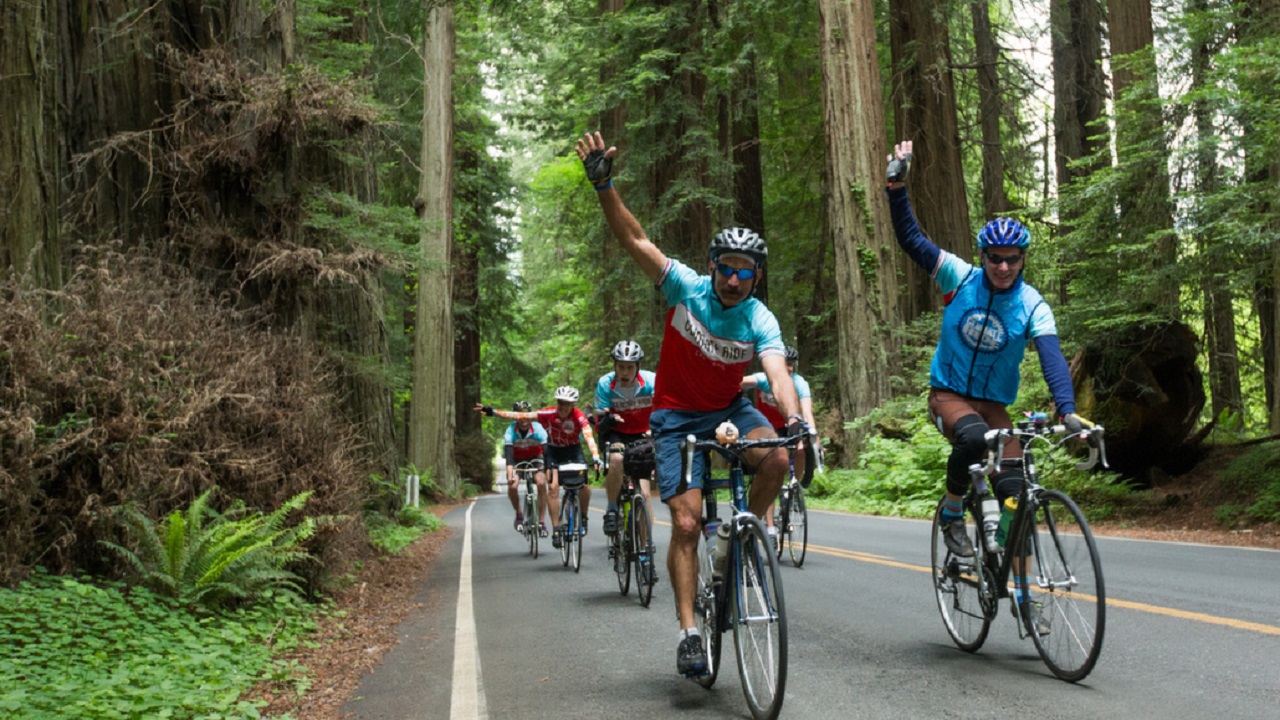With less than 3% of charitable giving going to support environmental organizations, Climate Ride has stepped in to raise that percentage. Climate Ride, founded in 2008, is the first organization to host bike-a-thons in support of organizations who hold environmental sustainability at the core of their mission.
In 2006, co-founder Caeli Quinn was an international hiking and biking guide in Southeast Asia. The slow pacing of a bike ride allows the rider to soak in the environment and connect with nature; in Quinn’s experience, she couldn’t help but notice the amount of pollution and environmental degradation. She returned to her home in Montana, near Glacier National Park, to hear park scientists predict that there would be no glaciers left by 2030.
Having participated in bike-a-thons for health and disease related issues, she wondered why there was not a similar way to fundraise in support of environmental causes. After an inaugural bike-a-thon in 2008 from New York City to Washington, D.C., Quinn and like-minded friends planned a second bike-a-thon. Thus, Climate Ride was born.
How Do They Do It?
Climate Ride operates three charitable multi-day rides—Climate Ride California, Climate Ride Midwest, and recent addition, Climate Ride Northeast—as well as Climate Hikes in Glacier National Park and Bryce Canyon and Zion National Parks and a DIY program: Independent Challenges.
The 2014 Midwest ride raised $150,000 in grants just to beneficiaries in Grand Rapids, Chicago, and Indiana. As a result of the Midwest ride, there’s an incredibly vibrant community of beneficiaries in Grand Rapids.
Last year alone, with only 390 participants, Climate Ride gave out $725,000 in grants to over 100 beneficiaries. With a 30% increase in their grant programs each year, Climate Rides expects to raise $1,000,000 next year with a little more than 475 participants.
Climate Ride’s mission is “to inspire and empower citizens to work toward a new energy future. [They] use sports as a means to change lives and build an effective, citizen-based sustainability movement.”
Climate Ride engages approximately 150-200 bicyclists per ride. Riders join the conversation on sustainability in several ways. The first is by raising at least $2,800 to participate in the ride. This money is then given to up to 5 beneficiaries of their choice.
Along the ride, they network with other participants who are passionate about affecting environmental change, as well as potential beneficiaries, who are likewise passionate about their mission. Each night, riders engage in conversations on sustainability issues. This year, riders are given the opportunity to meet with representatives from the some of the beneficiary groups through a speaker series entitled “Ignite Night.”
Perhaps what is most important, however, is that riders are able to engage with some of the best landscapes in America. For Climate Ride, there is a direct link between connecting with nature and being able to connect with the environment.
“One of the biggest challenges of raising money for the environment,” Quinn confesses, “is how do you convey to people that it’s a life and death issue? That’s so clear with health and disease. Part of what we’re trying to achieve is helping people to connect the dots between public health, the vitality of the economy, all of these things relate to the climate and environment and active transportation.”
Then What?
At the end of each year, grants are given out to the beneficiary groups based on what participants raised. Climate Ride maintains a list of over 120 beneficiaries. Climate Riders often choose to have the funds that they’ve raised benefit an environmental nonprofit they are already familiar with. Otherwise, environmental nonprofits have contacted Climate Ride and asked to be a beneficiary.
The beneficiaries are able to be a part of Climate Ride at no risk to them; Climate Ride takes responsibility for putting on all events. These smaller environmental nonprofits would not usually be able to take on these kinds of fundraising events due to limited staff and resources. Climate Ride makes it possible for them to showcase their work and raise funds. For many of these organizations, it’s just the amount needed to fund a new position or implement a much needed program.
The effects of Climate Ride don’t end here, however. By keeping their rides limited to a small amount of participants, riders are really able to engage in conversations on sustainability and get to know the beneficiaries. Even once the ride is over, Climate Riders go on to work with their beneficiaries.
One example is Dan Leaverton, who found Climate Ride last year through a Google search. He had never been in a charitable ride before but ended up raising $14,000 dollars for an organization in his local area—Bike East Bay. He had never connected with this organization before but now works with them as a volunteer.
Climate Ride hopes to continue growing. Just recently, they’ve added another bike route, Climate Ride Northeast, a 320-mile ride from Bar Harbor, Maine to Boston, Massachusetts that is expected to raise $400,000 for more than 100 local, regional, and national environmental nonprofits. They plan to have another ride in California, and start two other rides somewhere in the Southeast and the Pacific Northwest. Quinn’s long-term vision is to see Climate Ride reach 1,000, even 2,000 participants. That will go a long way towards filling the gap of charitable giving for the environment.
If there’s one that that Quinn says she’s learned as the co-founder of Climate Ride, it’s “the power of a bike ride or the power of people to be change makers.” In Quinn’s personal experience, it’s possible to take your skills and your passion and achieve your mission, whatever that might be.
To register to ride or to support a cyclist or team, visit www.climateride.org or call 406-552-0708. Join the conversation and follow Climate Ride on Facebook: https://www.facebook.com/climateride, on Twitter: @ClimateRide using #ClimateRide and on Instagram: climate_ride using #ClimateRide.
Jordan Smith is a recent graduate of NC State, holding her Master’s degree in English with a concentration in Rhetoric and Composition








